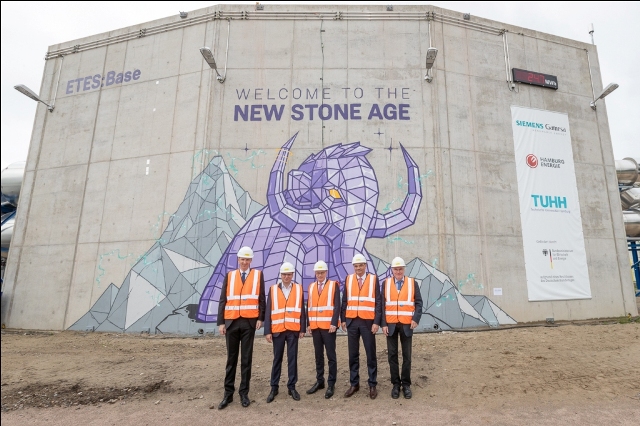Siemens Gamesa Renewable Energy (SGRE) announced it has begun the operation of its electric thermal energy storage system (ETES).
The ETES makes it possible to store large quantities of energy cost-effectively and thus decouple electricity generation and use, the company said.
The aim of this pilot plant is to deliver system evidence of the storage on the grid and to test the heat storage extensively.
The facility consists of around 1,000 tons of volcanic rock as an energy storage medium. It is fed with electrical energy converted into hot air by means of a resistance heater and a blower that heats the rock to 750°C.
When demand peaks, ETES uses a steam turbine for the re-electrification of the stored energy. The ETES pilot plant can thus store up to 130 MWh of thermal energy for a week. In addition, the storage capacity of the system remains constant throughout the charging cycles.
Siemens plans to use its storage technology in commercial projects and scale up the storage capacity and power, in the range of several gigawatt hours (GWh) in the near future, the company said.
“Decoupling generation and consumption of fluctuating renewable energy via storage is an essential contribution to implementing the energy system transformation. We therefore need cost-effective, efficient and scalable energy storage systems,” demands Andreas Feicht, State Secretary at the Federal Ministry of Economics and Energy.
“With the commissioning of our ETES pilot plant, we have reached an important milestone on the way to introducing high-performance energy storage systems. Our technology makes it possible to store electricity for many thousands of households at low cost,” says Markus Tacke, CEO of Siemens Gamesa Renewable Energy.
The technology reduces costs for larger storage capacities to a fraction of the usual level for battery storage, according to Siemens Gamesa.

